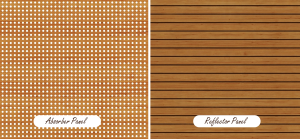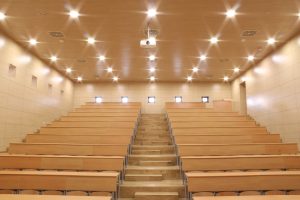In order to make sound insulation on the ceiling, it is necessary to use an insulation material that is suitable for the characteristics of the sound insulation environment. Sound insulation, which is also made in the form of a skeleton in which a building has just been built, can also be done after the building is actively used. According to the new zoning law, the insulation process of all buildings must be completed during the construction phase.
Reasons for Ceiling Sound Insulation
The most important reason for ceiling insulation is the prevention of sound transmission from the lower floor upwards and from the upper floors. Another reason for sound insulation is to preserve the sounds in the environment. Keeping the sound inside while setting up a home theater system or preparing a studio means having a better quality of use. When the sound hits uninsulated walls, some of the sound is lost and the other part reverberates. Since there is an echo in sound recording areas such as studios, it will cause the recorded sound to be of low quality, so insulation is required.
How to Apply Ceiling Sound Insulation?
In order to apply sound insulation, firstly, the insulation material should be selected according to the needs of the environment. Materials are selected according to sound intensity. Discovery should be done to determine the sound intensity of the environment. After the exploration process is done and the material suitable for the needs of the environment is selected, the surface to be insulated is covered with drywall. Before the insulation material is attached, the application area must be flat and clean. Sound insulation processes made on rough surfaces do not last long. In order for the materials to be adhered, adhesives developed specifically for the insulation process must be used. After the insulation material is attached, another layer of drywall is passed and the process is completed.
Materials Used in Ceiling Sound Insulation
The materials used in ceiling insulation vary according to the range of the sound frequency in the area where the insulation is made. The materials used for insulation are:
- Barrier Acoustic Sponges: The material, which is acoustic sponge with sound absorbing properties developed in shapes such as acoustic labyrinths, pyramids and eggs on the upper surface, has a flat fireproof foam on the lower surface.
- Barrier Melamine Sponge: It is the light colored barrier sponges obtained by using foam, where heavy sound barrier is mounted. It is suitable for use in environments where sound quality is desired to be increased.
- Decorative Acoustic Sponges: The sponges used to solve the sound problems in the environments are also preferred in order to obtain a decorative appearance with their color and model options.
- Acoustic Wood Pan: Panels with perforated and grooved models have echo and reflection-canceling properties.
- Acoustic Fabric Covered Panels: Fabric covered panels with colorful and patterned options that can also be applied to walls are also very useful in decorative terms. Fabric covered panels are used to eliminate problems such as echo, echo and noise confusion.
- Epdm Heavy Sound Barrier: The material that provides excellent acoustic performance and durability can be used with acoustic sponges. The product used on the ceiling is also preferred for floor and wall insulation. Insulation material is sold in the form of panels or rolls.
Where Is Ceiling Sound Insulation Used?
The usage areas of ceiling sound insulation have a wide range. Suitable for use in studio and recording environments, sound insulation prevents the loss of sound. The application, which is also used in theaters and movie theaters, is also effective in reaching the farthest point of sound. If ceiling sound insulation is done while the building is still under construction, no space is lost. However, subsequent insulations cause a loss of 14 cm when the area to be covered by the insulation materials is considered. While ceiling insulation is also used in apartments, it is also used in social and common areas such as parking lots, sports halls, saunas and Turkish baths.







